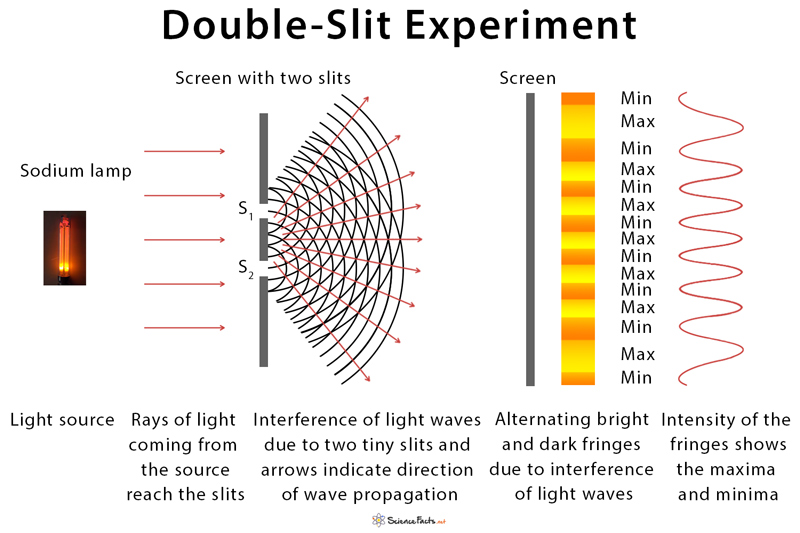The Double Slit Experiment: Unveiling the Mysteries of Quantum Mechanics

The double slit experiment is one of the most famous experiments in quantum mechanics. It reveals the perplexing behaviour of particles at the quantum level. Thomas Young first conducted the experiment in 1801. It has undergone numerous iterations and refinements. These changes continually challenge our understanding of reality.
The Basic Setup

The double slit experiment involves a light source. It has particles like electrons directed at a barrier with two closely spaced slits. On the other side of the barrier, a screen detects the light or particles that pass through the slits. When both slits are open, an interference pattern emerges on the screen—a series of bright and dark fringes—indicating wave-like behaviour.
This pattern arises because light waves passing through the two slits interfere with each other. Where the waves reinforce one another, bright fringes appear; where they cancel each other out, dark fringes emerge. This observation suggests that light behaves as a wave, challenging the then-prevalent particle theory.
The Quantum Twist
The real intrigue begins when scientists attempt to observe which slit a particle passes through. When detectors are placed to monitor the particles, the interference pattern disappears. Particles then behave as if they are individual particles traveling through one slit or the other. This phenomenon illustrates the concept of wave-particle duality. Particles like photons and electrons exhibit both wave-like and particle-like properties. This duality depends on whether they are being observed.
Quantum Superposition
The double slit experiment also introduces the idea of quantum superposition. Before a measurement is made, a particle exists in a state of superposition. This means it can be in multiple states simultaneously. It is only upon measurement that the particle “collapses” into one definite state. This notion has profound implications for our understanding of reality. It suggests that the act of observation plays a crucial role in determining the state of a quantum system.
Implications for Reality
The implications of the double slit experiment extend beyond the confines of physics. It raises fundamental questions about the nature of reality itself. If particles exist in multiple states until observed, what does that say about the universe when unobserved? Are our perceptions shaping the reality around us? These questions have spurred philosophical debates and discussions about the role of consciousness in the quantum realm.
Modern Variations
In contemporary physics, variations of the double slit experiment continue to push the boundaries of our understanding. Scientists have conducted the experiment using larger molecules. Examples include buckyballs and even single atoms. They consistently observe wave-particle duality. These modern iterations explore not only the behaviour of light but also the fundamental principles governing matter itself.
Conclusion
The double slit experiment remains a cornerstone of quantum mechanics, embodying the complexity and wonder of the quantum world. It challenges our intuition. It forces us to reconsider the nature of reality. We must reconsider observation and the very fabric of the universe. As physicists delve deeper into quantum phenomena, the questions raised by this simple experiment continue to inspire inquiry. These questions prompt us to seek answers in the uncharted territories of quantum mechanics.